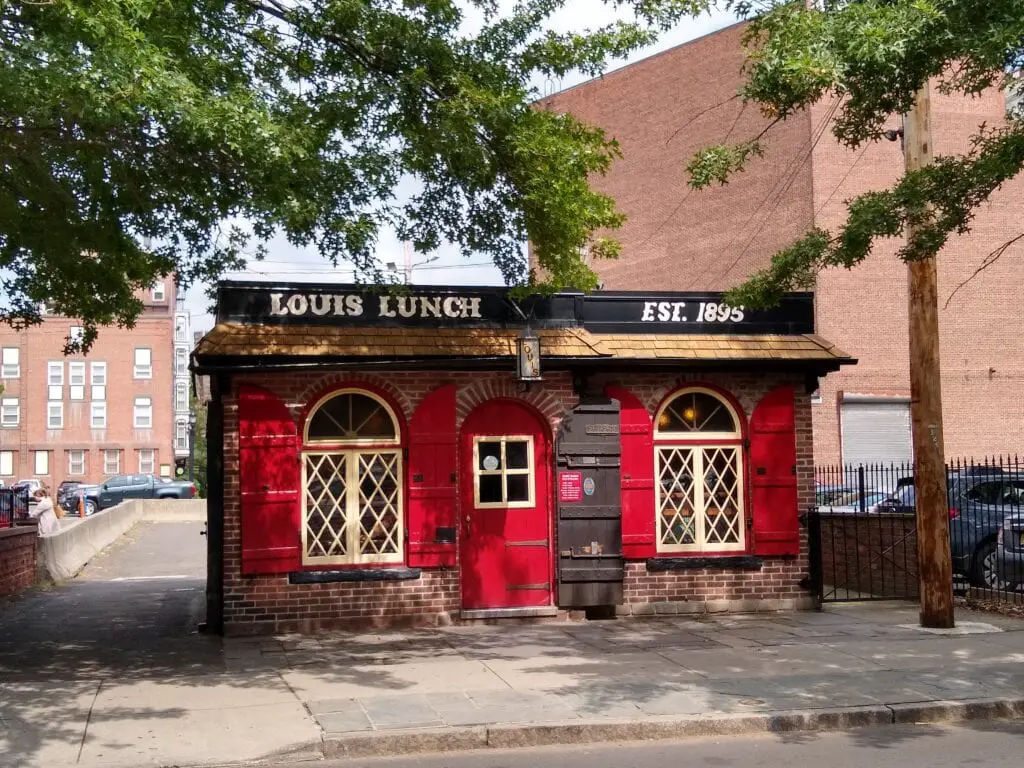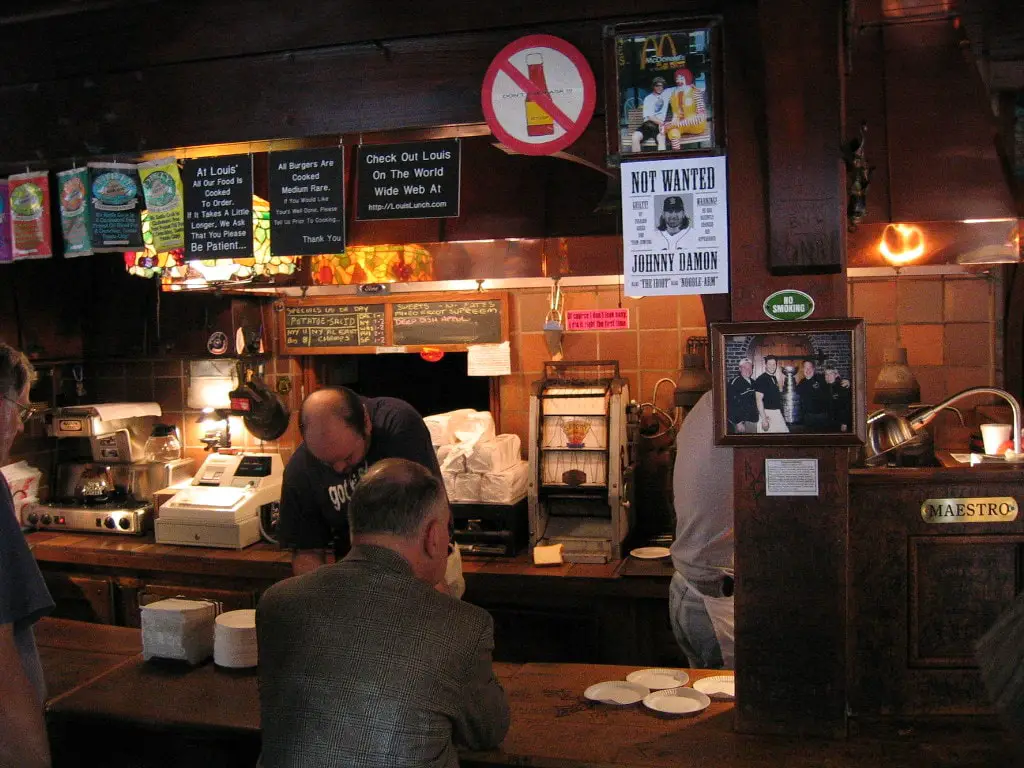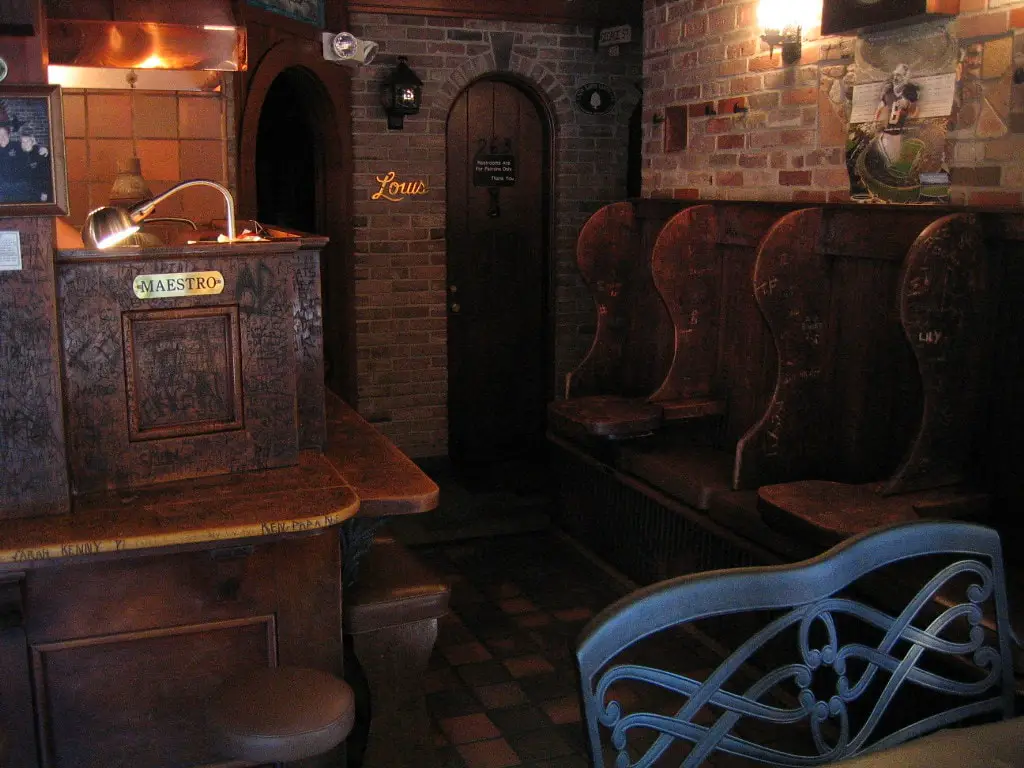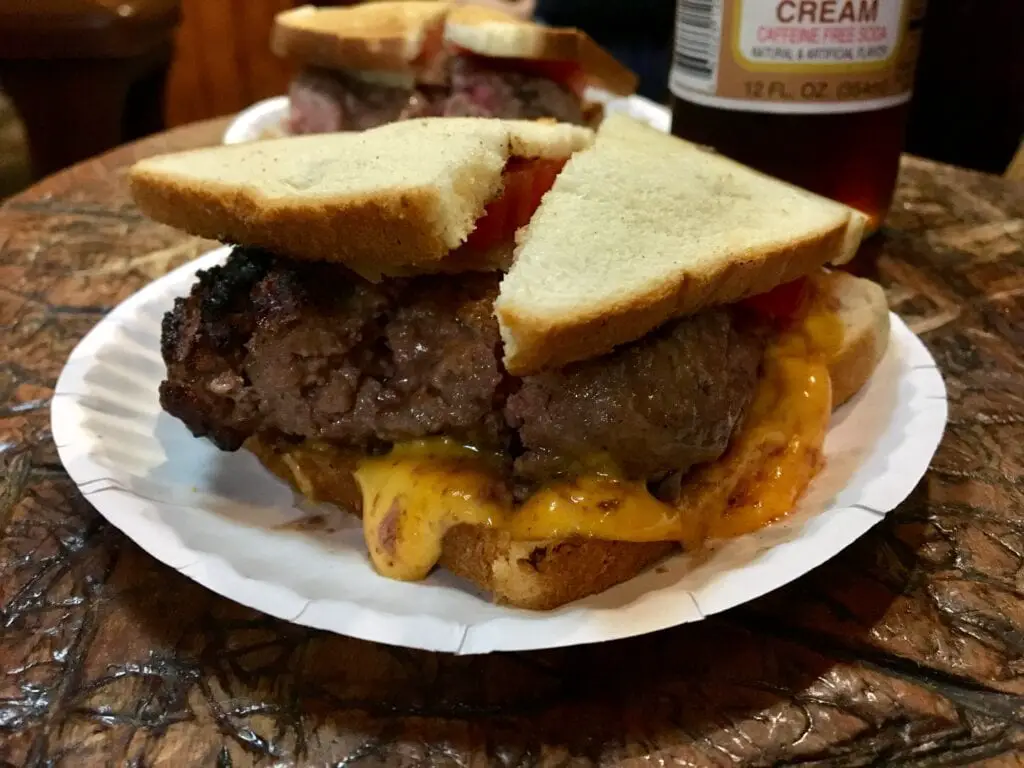The Establishment of Louis' Lunch
In the heart of New Haven, Connecticut, a culinary landmark was born in 1895. Initially, Louis' Lunch was a small lunch wagon and emerged as a pioneer in the American fast food industry.
Established by Louis Lassen, this modest wagon laid the foundation for what would become an iconic eatery in the United States. The inception of Louis' Lunch marked not just the birth of a local cafe but the beginning of a significant chapter in American culinary history.
The year 1900 witnessed a pivotal moment at Louis' Lunch. In response to a customer's request for a quick, portable meal, Louis Lassen crafted the first hamburger.
This creation was a simple yet innovative concept: a blend of ground steak trimmings between two slices of toast. This moment is not just a milestone for Louis' Lunch but is often celebrated as the birth of the American hamburger, a staple in global fast food culture.
Louis' Lunch experienced a significant change in 1917, moving from its original location to a square-shaped brick building that once served as a tannery. This relocation was a step towards permanence, solidifying Louis' Lunch's place in New Haven. 1975, the restaurant moved to 263 Crown Street to accommodate urban development.
Despite these relocations, the essence of Louis' Lunch remained intact. Using original cooking equipment, like the cast iron vertical gas broilers from 1898 and the 1929 Savory Appliance Radiant Gas Toaster, has been a testament to the restaurant's dedication to preserving its rich history.
In the bustling city of New Haven, Louis' Lunch is a testament to culinary innovation and tradition. For those exploring things to do in New Haven, Connecticut, visiting this historic site offers a unique glimpse into the origins of one of America's most beloved foods.
Louis' Lunch not only serves as a reminder of the humble beginnings of the hamburger but also symbolizes the enduring legacy of family-run businesses in shaping American food culture.
The Lassen Family Legacy
From Denmark to New Haven: The Lassen Journey
The story of Louis' Lunch is deeply intertwined with the Lassen family, beginning with its founder, Louis Lassen. Originally from Denmark, Louis immigrated to New Haven in 1881, bringing a rich cultural heritage and a spirit of entrepreneurship.
He married Sophia Kurtz, an Ohio native, in Manhattan on May 25, 1889. Together, they laid the foundations of a family legacy over a century. The couple's life in New Haven was marked by their commitment to community and family, with their children continuing the legacy of Louis' Lunch.
A Century-Old Family Business
Louis' Lunch is a remarkable example of a family-run business, with the baton passed down through generations. After Louis Lassen's passing in 1935, the company was taken over by his descendants, each generation infusing new energy while preserving the original essence.
This continuity has been a key factor in maintaining the authenticity and charm of Louis' Lunch. The fourth generation of the Lassen family currently operates the restaurant, upholding the traditions and values instilled by Louis over a century ago.
Preserving Tradition in Modern Times
The Lassen family's dedication to preserving tradition is evident in every aspect of Louis' Lunch. From maintaining the original recipes to keeping the historic building's character intact, their efforts ensure visitors experience the same ambiance and taste that defined the eatery in its early days.
This commitment to tradition has made Louis' Lunch a restaurant and a living piece of history in New Haven, Connecticut.

A Unique Culinary Method
The Art of Burger Making
At Louis' Lunch, the hamburger is more than just a meal; it's a craft. Since its inception, the restaurant has used a proprietary blend of five cuts of meat for its hamburgers.
This blend is ground fresh daily, ensuring a unique flavor profile that has been a hallmark of Louis' Lunch for decades. The burgers are hand-rolled, a technique that adds a personal touch to each serving, distinguishing it from the mass-produced burgers found elsewhere.
Cooking with History
The cooking equipment at Louis' Lunch is a blend of culinary art and history. The original cast iron vertical gas broilers, manufactured by Bridge and Beach Co. of St. Louis, Missouri, in 1898, are still in use.
These broilers cook the burgers vertically, a method that has become a signature of Louis' Lunch. The restaurant also uses a 1929 Savory Radiant Gas Toaster, adding a touch of nostalgia to the modern-day dining experience.
A Menu of Simplicity and Quality
Louis' Lunch's menu reflects its philosophy of simplicity and quality. The focus is on the hamburger, served on white toast with cheese, onion, and tomato as garnishes.
This simplicity allows the quality of the meat and the unique cooking method to shine through. The restaurant's commitment to a limited menu underscores its dedication to perfecting what it serves, a principle that has stood the test of time.
The Hamburger's Evolution and Controversy
The Cheese Spread Innovation of the 1950s
In the 1950s, Louis' Lunch witnessed a significant culinary development when Ken Lassen, a member of the Lassen family, introduced cheese spread to the hamburger. This addition marked a subtle yet impactful evolution in the hamburger's recipe, offering a new flavor dimension to the classic dish.
The cheese spread, replacing traditional sliced cheese, became a distinctive feature of Louis' Lunch's hamburgers, further setting them apart from conventional burger offerings.
Debates and Recognition in the Hamburger Origin Story
The hamburger's origin has been a subject of debate and contention among culinary historians. While Louis' Lunch stakes a claim to creating the first hamburger, other establishments and individuals across America have also claimed this title.
In a remarkable acknowledgment, the Library of Congress in 2000 identified Louis' Lunch as the original hamburger inventor, lending substantial credibility to the restaurant's historical assertion.
This recognition was backed by United States Representative Rosa L. DeLauro, adding a layer of official acknowledgment to the restaurant's legacy.

The Ongoing Dialogue in Culinary Circles
Despite the recognition, the debate over the true origin of the hamburger continues in culinary circles. Critics and food historians often challenge the definition of a hamburger, with some arguing that using toast instead of a bun at Louis' Lunch does not conform to traditional hamburger standards.
This ongoing dialogue reflects the dynamic nature of culinary history and the diverse perspectives that contribute to understanding food's cultural evolution.
Louis' Lunch in Popular Culture
Media Spotlight and Culinary Recognition
Louis' Lunch has garnered significant attention in popular culture, featuring in various media outlets. The restaurant has been showcased on prominent channels such as the Travel Channel, the Food Network, and the History Channel.
These appearances have not only highlighted the unique culinary offerings of Louis' Lunch but also underscored its historical significance in the American food landscape. The media coverage has played a crucial role in introducing Louis' Lunch to a broader audience, elevating its status as a culinary landmark.
Celebrity Patrons and Presidential Visits
The allure of Louis' Lunch has attracted a diverse range of patrons, including notable figures and celebrities. Louis' Lunch has had the privilege of hosting United States Presidents George H. W. Bush and George W. Bush, reflecting its broad appeal and esteemed reputation.
Other distinguished visitors include aviator Charles Lindbergh and musician Artie Shaw, adding to the restaurant's rich tapestry of guest history.
Accolades and Rankings in the Culinary World
Louis' Lunch's impact on the culinary world has been recognized through various accolades and rankings. Esteemed publications and food critics have lauded the restaurant for its exceptional burgers.
Food & Wine magazine recognized Louis' Lunch as one of the "Best Burgers in the U.S.," underscoring their culinary creations' superior quality and distinctiveness. Such recognitions celebrate the restaurant's culinary excellence and reinforce its status as an integral part of America's gastronomic heritage.
The No-Ketchup Policy and Customer Experience
Upholding Culinary Traditions with a Strict Policy
Louis' Lunch is renowned not just for its hamburgers but also for its strict no-ketchup policy. This unique rule has been a part of the restaurant's tradition for decades, emphasizing the importance of experiencing the hamburger's authentic flavor.
The policy is so ingrained in the restaurant's culture that customers asking for ketchup are often asked to leave, which has become a topic of interest and amusement among patrons and the media alike.

The Customer Experience at Louis' Lunch
Visiting Louis' Lunch offers more than a meal; it's an experience steeped in history and tradition. The restaurant's interior, with its vintage decor and historical ambiance, transports customers back in time.
The interaction with the staff, known for their friendly yet straightforward manner, adds to the unique charm of the dining experience. This combination of distinctive culinary practices, historical setting, and engaging customer service makes Louis' Lunch memorable.
Media Attention and Cultural Impact
The no-ketchup policy and the overall customer experience at Louis' Lunch have garnered significant media attention. Various food blogs, culinary articles, and travel guides have featured this aspect of the restaurant, often highlighting it as a quirky yet integral part of its charm.
This coverage has contributed to the cultural impact of Louis' Lunch, making it not just a restaurant but a symbol of culinary authenticity and tradition.
Modern Challenges and Adaptations
Navigating Contemporary Dining Trends
As the culinary landscape evolves, Louis' Lunch has faced the challenge of adapting to modern dining trends while preserving its historic identity.
The rise of fast-casual dining, dietary preferences, and the increasing emphasis on sustainable practices have influenced the restaurant industry significantly.
Louis' Lunch has navigated these changes by focusing on the quality and authenticity of its offerings, appealing to traditionalists and new customers seeking a unique dining experience.
Adapting to Changing Times
Louis' Lunch has implemented subtle changes in recent years to stay relevant in the ever-changing food industry. While the core menu and cooking methods remain unchanged, the restaurant has embraced modern marketing techniques, including an online presence and social media engagement.
These efforts ensure that Louis' Lunch stays connected with its customer base, including a younger demographic, while honoring its rich history.

Preserving Legacy Amidst Modern Challenges
Despite the challenges posed by a dynamic culinary environment, Louis' Lunch thrives as a beacon of tradition in New Haven, Connecticut. The restaurant's commitment to preserving its legacy while adapting to contemporary demands exemplifies its resilience and enduring appeal.
As Louis' Lunch moves forward, it remains a cherished landmark, offering a unique blend of historical significance and culinary excellence.
